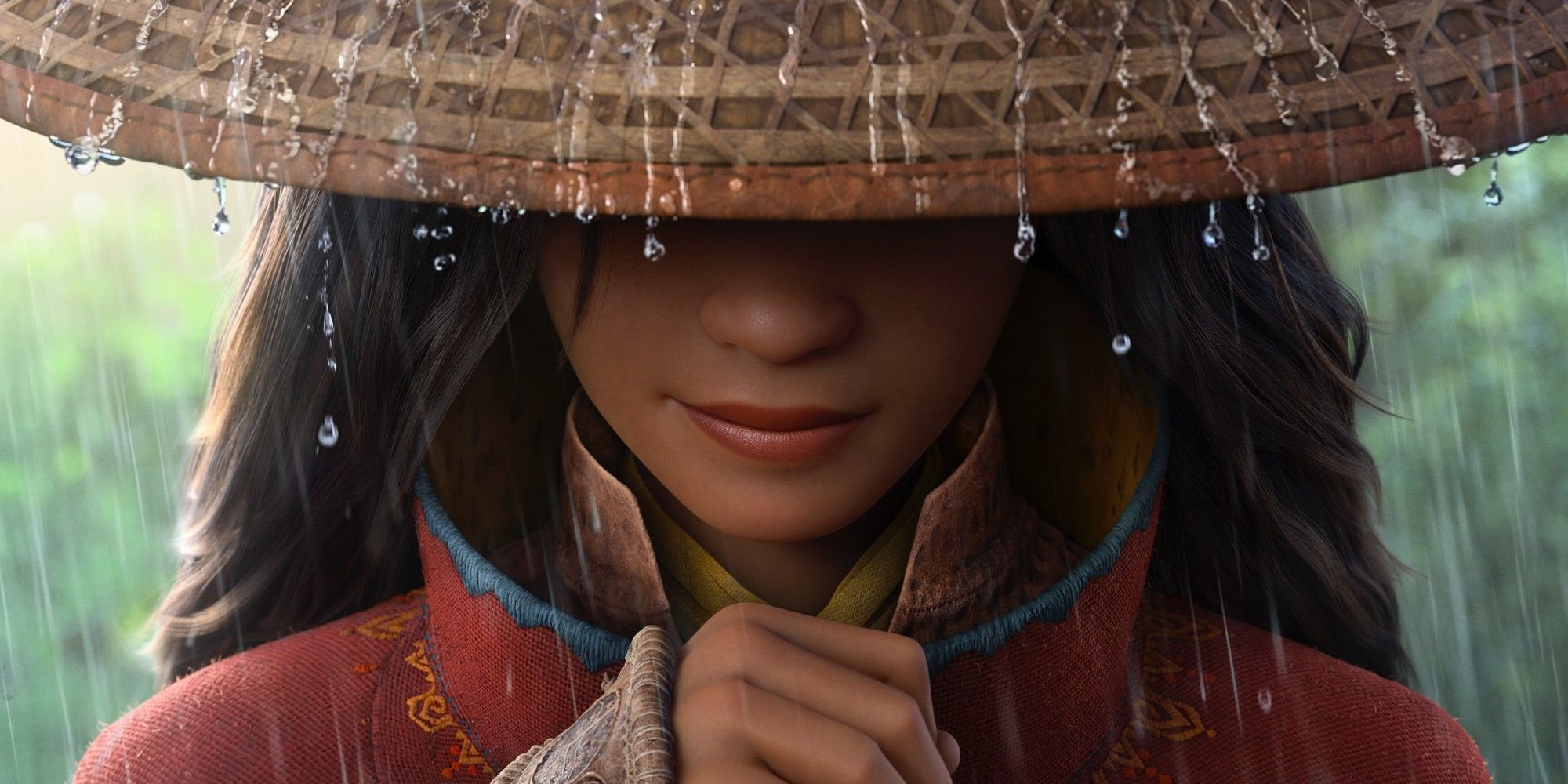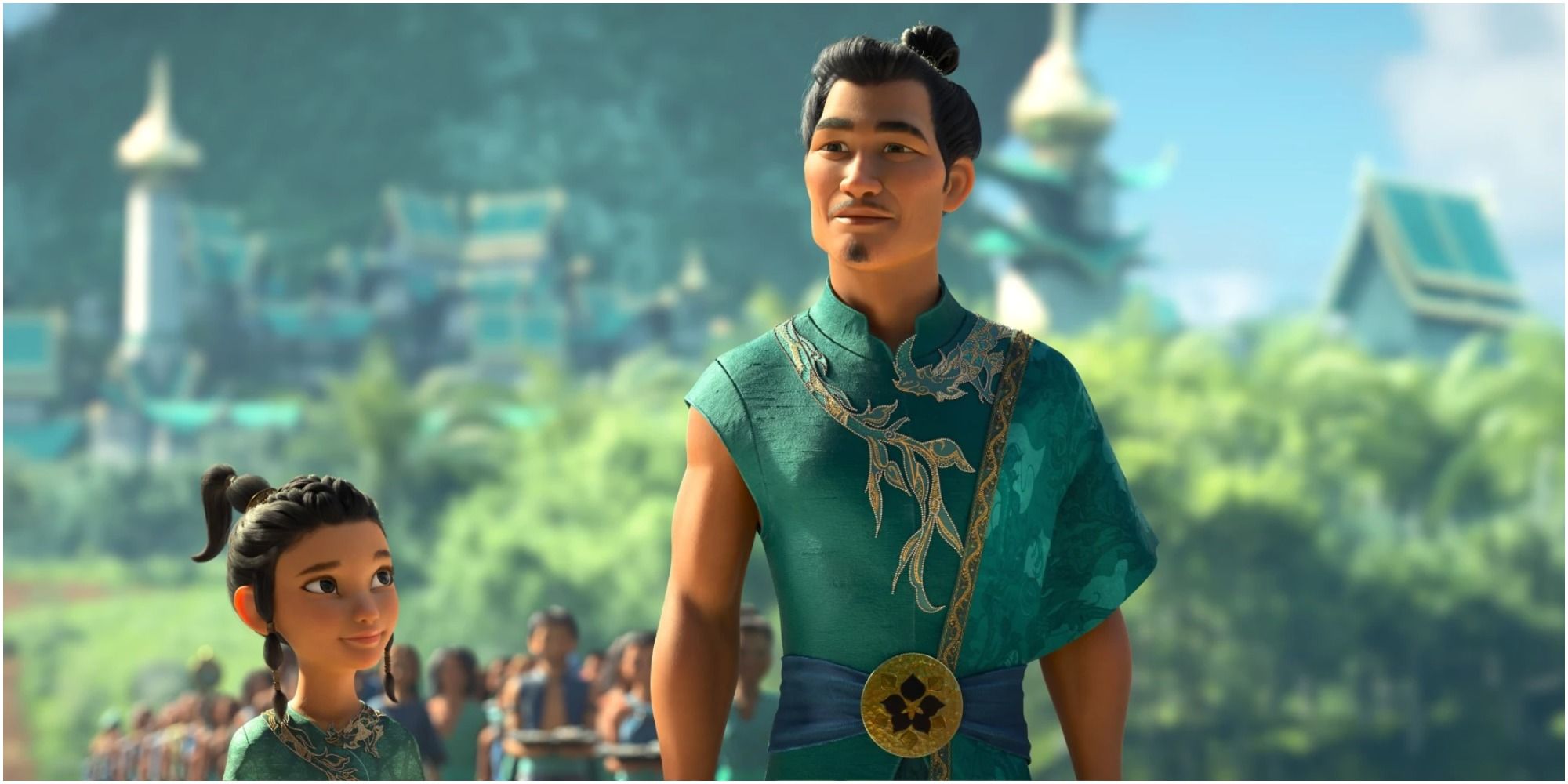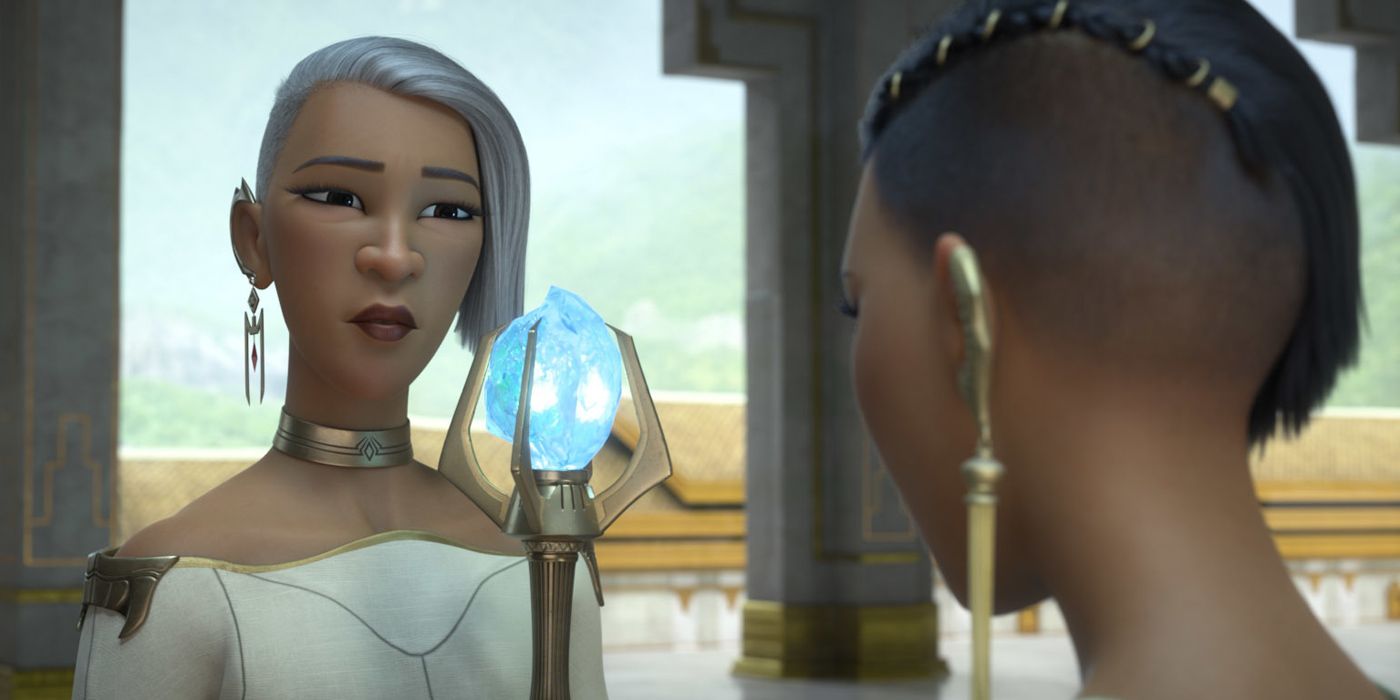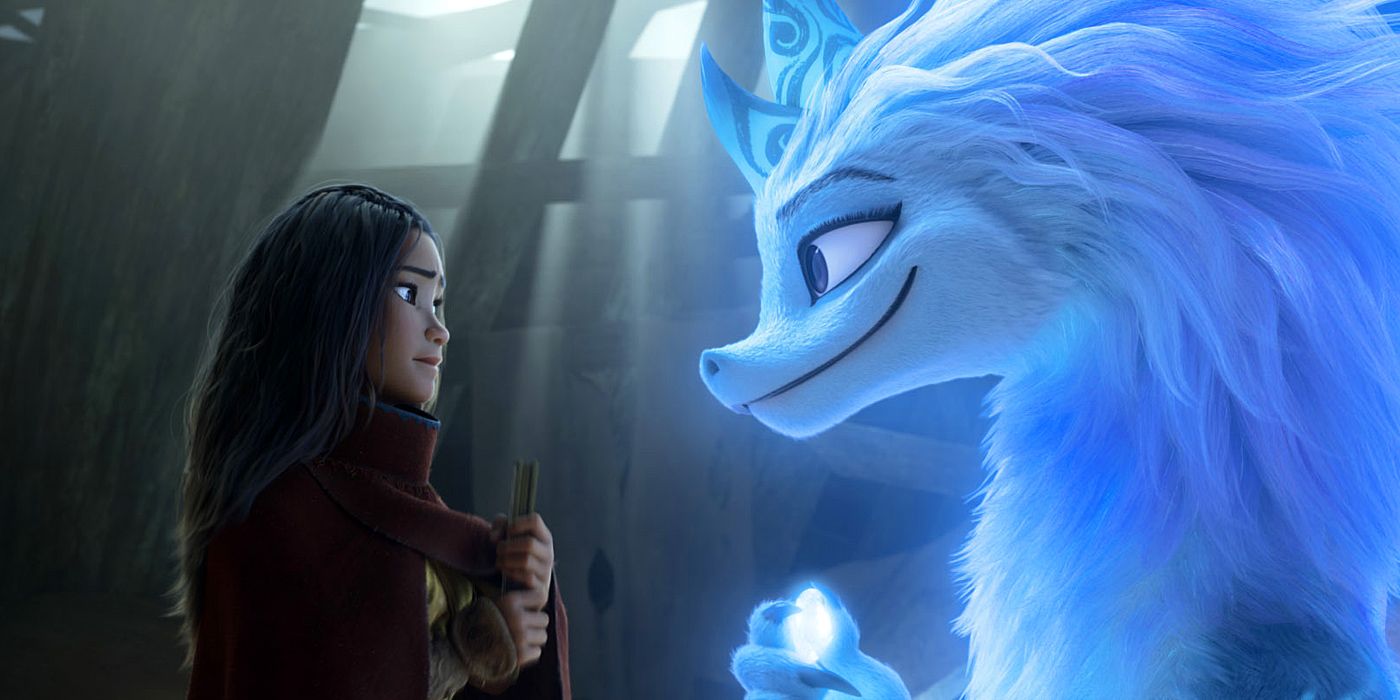
The latest Disney animated film Raya and the Last Dragon introduces audiences to the fantasy world of Kumandra, a land with kingdoms inspired by and designed and Southeast Asian civilizations. As the divided kingdoms are unable to come together in time to face the rise of monsters known as the Druun, shadowy entities that transform anyone in their way into stone, the young warrior Raya encounters a dragon named Sisu to help restore the world and bring the communities together.
In a press event attended by CBR, the cast and crew of Raya and the Last Dragon spoke about bringing their respective characters to life, the real-world influences behind Kumandra and spoke on the importance of the film being released in the face of rising hate crimes against Asian-Americans.
Actor Daniel Dae Kim took a particularly strong sense of pride in portraying his character, Raya's father Chief Benja. As with the cast recording their vocal performances at home due to the pandemic, Kim recorded his lines from his Hawaii home and recounted that in his first recording session with directors Don Hall and Carlos Lopez Estrada, unexpected technical difficulties forced him to re-record about an hour's worth of dialogue. Co-star Benedict Wong had a considerably easier time recording his lines as Tong in a studio in Western Australia. Despite the unorthodox production and actors working separately instead of opposite one another in a sound studio, star Kelly Marie Tran credited the crew for being able to make the film and its performances appear completely seamless.

Estrada and screenwriter Qui Nguyen credited the cast and crew all personally invested in the project from inception, bringing their all for their performances and the animation. Izaac Wang, who voices the young entrepreneur Boun, complimented the 450-person crew in crafting such an impressive film representative of so many Southeast and East Asian cultures in the fantasy world of Kumandra. Awkwafina lauded the animation team for the level of realism in the environmental effects and character design, including her character Sisu's human form. "That looks like me. And so, those nuances are very, very trippy and very, very mind-blowing," Awkwafina admitted.
Screenwriter Adele Lim observed that whereas Western mythology and folklore depict dragons as flying beasts that breathe fire and as narrative obstacles to be vanquished, East and Southeast Asian dragons are often depicted as water deities. Sisu is not a plot device that magically solves all of Kumandra's problems as Raya initially hopes but a quirky figure that sees the good in all people in contrast to the battle-hardened Raya. Producer Osnat Shurer added that the decision to make Sisu a female character came relatively early on in development, as an extension of the character symbolizing hope, harmony and water.
Both Sandra Oh and Gemma Chan appreciated that their respective characters, Virana and her daughter Namaari, were nuanced figures rather than simple, shallow antagonists. Chan felt that level of complexity between rival kingdoms and characters felt "timely" and appreciated them being added so prominently, with Nguyen complimenting them both on giving their characters immense emotional gravitas.
"Our world is complex, and the problems of the world are only going to start to begin to be solved if we all work together, and the lack of trust and the division is a huge problem," Chan noted. "You can also understand why the people of Fang, are trying to protect themselves. You can understand why we have elements in society that want protect their own self-self-interests, and I think these are really complex themes to explore in a family film."

Both Lim and Nguyen pointed out that while they both -- along with many members of the animation team -- came from Southeast Asian households and the kingdoms in the film feature a synthesis of of those cultural influences, Kumandra was always intended to be a wholly fictional setting outside of its actual real-world inspirations. Rather than focus on a single Southeast Asian country to set the film, the team crafted a world that reflected a myriad of cultures just as Western fantasy stories are similarly set in fictional worlds like Middle-Earth or Westeros.
Both Chan and Tran felt their characters shared many similarities but the differences between their kingdoms severed the possibilities of lasting friendship between them from an early age. Chan especially enjoyed the moment in the film when Virana meets Sisu for the first time, with the character reverting to a child-like awe of dragons when facing one. Tran appreciated that both women learn to stand out of their own way and make sacrifices for the greater community that reflects their shared qualities. Awkwafina credited the production for allowing her to bring so much of her own voice to creating Sisu, forming a tight collaboration with the directors. Kim noted that Benja could have easily been written off as a stern father figure but instead was encouraged to explore a warmer, more loving side to his character, building on his dynamic with Tran.
Hall and Estrada credited Nguyen with helping the animation team by providing a lot of martial arts films for reference and showing them some in-person examples by bringing in stage weapons to the office. Nguyen added that stunt coordinator Maggie Macdonald in choreographing the fight sequences in the film, with the production team feeling a female choreographer was needed to best reflect the story featuring two female martial artist protagonists while drawing from Southeast Asian fighting styles. Oh praised the film for finally bringing much-needed representation for Asian cultures to the big screen that she had not seen growing up in her own youth.

The talk turned serious to the increase in hate crimes against Asian-Americans coinciding with the release of a major motion picture celebrating Southeast Asian culture. Oh observed that Raya and Namaari both reflect the question of trust and being willing to have one's heart broken repeatedly in order to keep it open. "Hate is not finished by hate, it is only won over by love," Oh expounded. Oh expressed hope that for all the destructiveness of the previous year, the damage exposed the need for communities to come together.
Nguyen noted that there was no way the production could have anticipated how the world would look when the film eventually was released but felt it served as a counterpoint to the racially motivated hate and celebrates Asian cultures rather than painting them in commonly held stereotypes. Kim expanded on this, underscoring the importance of families and children at an early age seeing positive Asian characters and cultures on-screen. Lim clarified her previous statement, noting that while Kumandra is itself a fantasy world, the influences and inspirations are real and real important to highlight the societies they represent.
"Particularly, with everything that's been happening in this last year, the violence towards Asian Americans, seeing each other as the other, words have power and words have the power to paint people in a different light," Lim added. "They have the power to bring us together. So, hopefully, this movie is our word, and our message to the world of let's pull together."
Tran especially appreciated that the film does not shy away from the pain and ugliness of the world in order to reach the hope to forge renewed communities, a lesson important to audiences worldwide. Chan took the opportunity to call attention to grassroots organizations that have been working towards unity between communities, especially throughout the pandemic to close out the press conference.
"Now it feels like there is this moment to spotlight their work because they're already doing that. They're already building these kind of cross-community alliances that we need and I feel so grateful that they are there doing the hard work on the ground," Chan observed. "We've all got our part to play. So, us, the storytellers, we put out our film, which I hope has a message that resonates, and then we also have amazing people within our communities who are doing that work today, so I just want to shout them out."
Directed by Don Hall and Carlos López Estrada from a script by Paul Briggs and John Ripa, Raya and the Last Dragon stars Kelly Marie Tran, Awkwafina, Gemma Chan, Daniel Dae Kim, Sandra Oh, Benedict Wong, Izaac Wang, Thalia Tran, Alan Tudyk, Lucille Soong, Patti Harrison and Ross Butler. The film is now in theaters and on Disney+ Premiere Access.
0 Comments